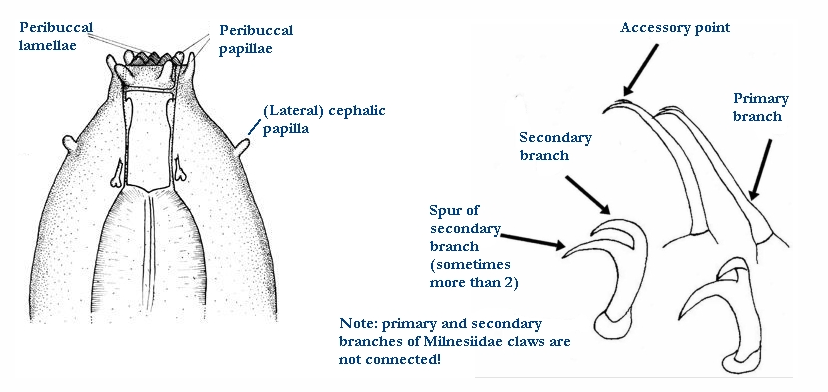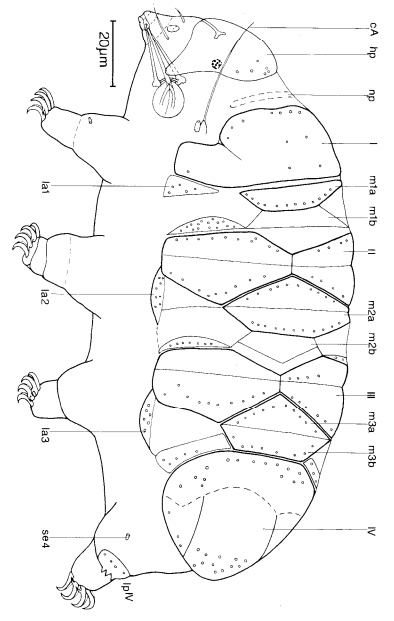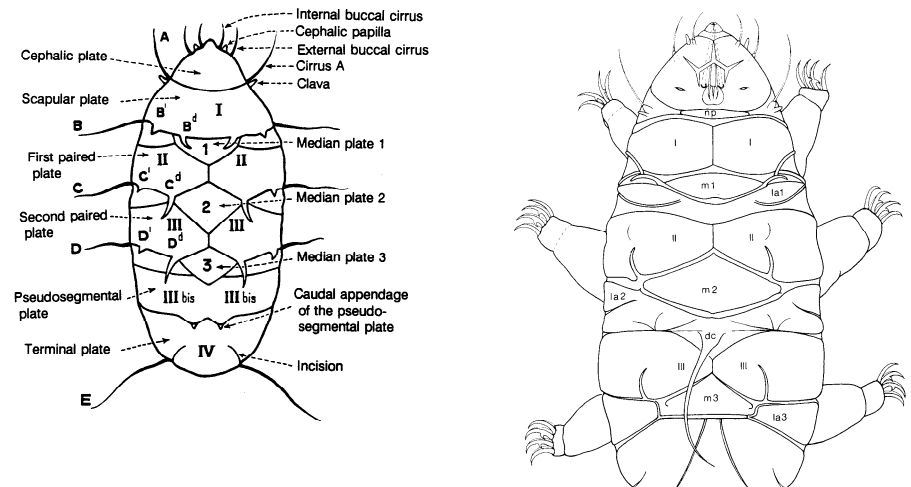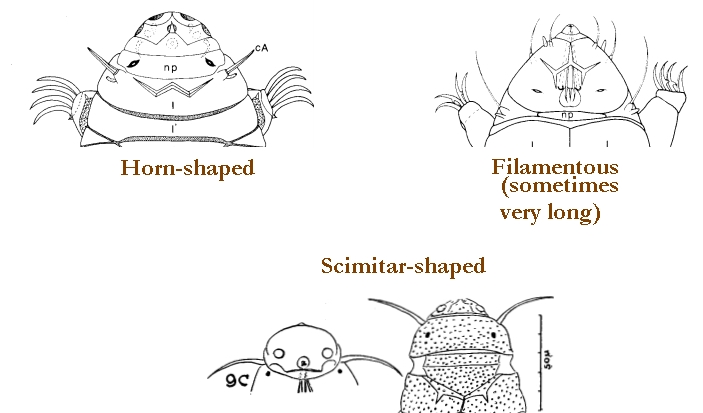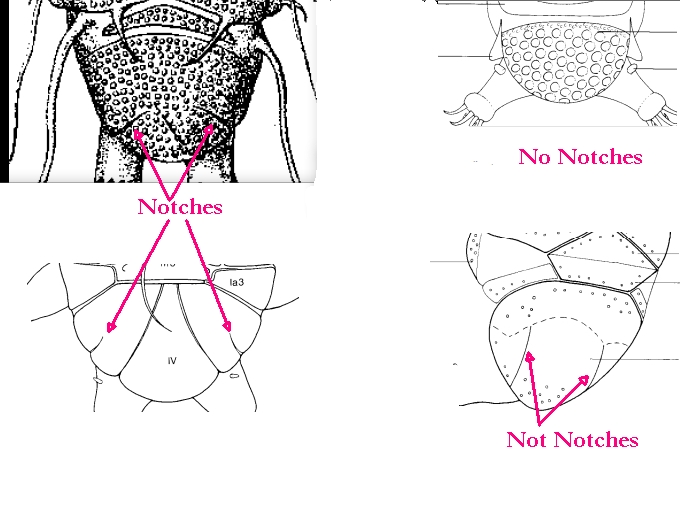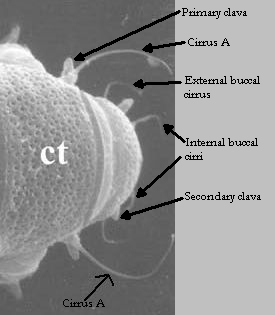limno-terrestrial and marine species, one fossil species
{Complete double claws on the legs with secondary claw branch joined to the
primary branch (secondary branch normally developed, reduced, or absent), or
double claws completely lost. Buccal tube completely rigid, or subdivided into
rigid and annulated flexible portions (pharyngeal tube); ventral lamina present or
absent; peribuccal and cephalic papillae absent; pharyngeal bulb with or without
placoids. Stylet furcae typically shaped (proximal portion with two branches ending
with thickened, swollen, rounded condyles, generally laterally compressed; see
Guidetti et al. 2012), with some exceptions. Smooth eggs laid in the exuvium or
ornamented eggs laid freely.} (Marley et al. 2011; Bertolani et al. 2014)
(Degma P, Guidetti R. 2018. Tardigrade Taxa. In: Water Bears: The biology of tardigrades. Schill RO, Editor. Switzerland: Springer Nature. p. 371-409. DOI: 10.1007/978-3-319-95702-9_15.)





